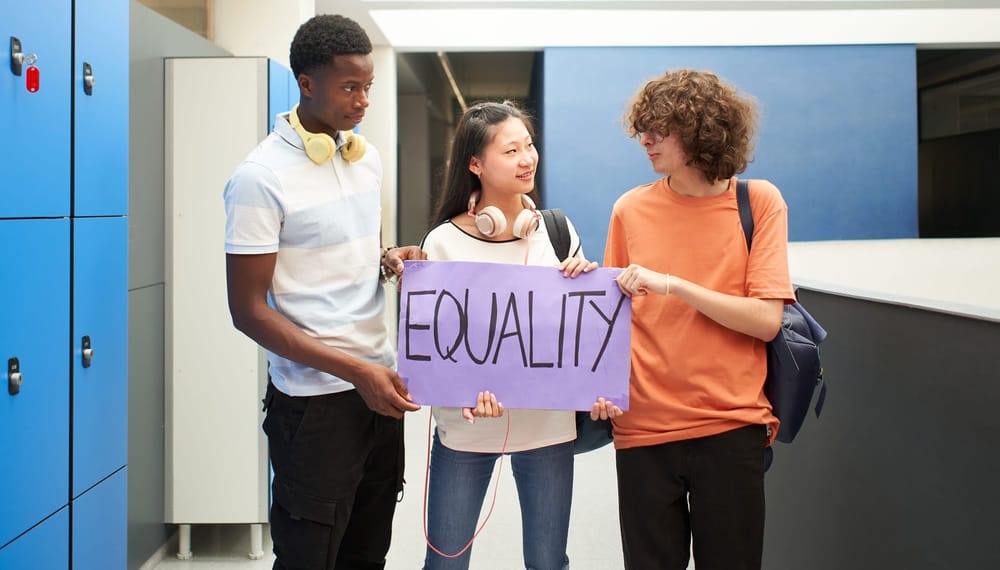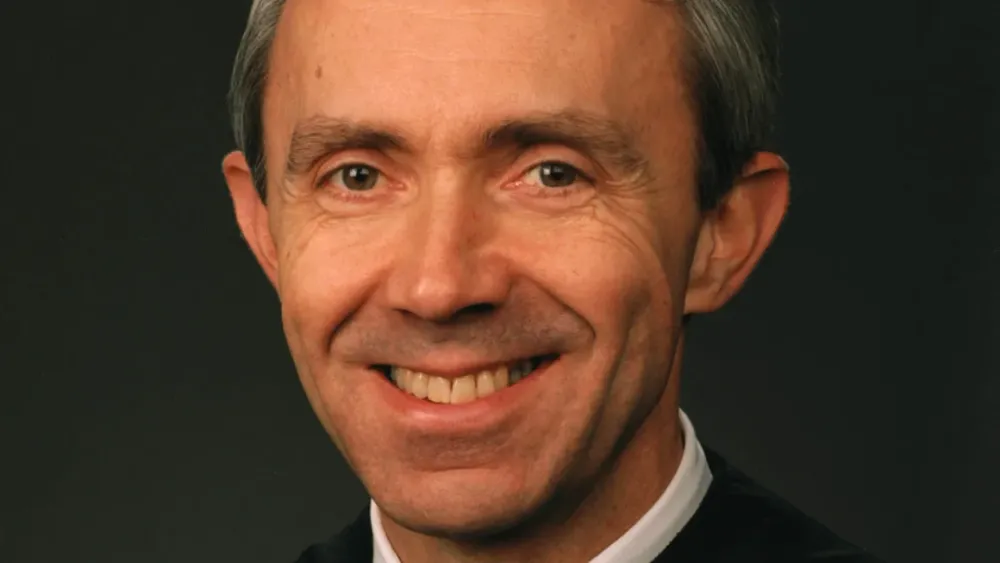The First Amendment of the United States Constitution enshrines the fundamental right to freedom of speech, a cornerstone of American democracy. However, this right is not without limitations, particularly within the context of public schools. The Supreme Court has grappled with the delicate balance between safeguarding students' free speech rights and maintaining an orderly educational environment. This ongoing constitutional dialogue has been shaped by several landmark decisions, each contributing to the evolving jurisprudence on student speech.
In recent years, the proliferation of digital communication platforms such as social media has further complicated this legal landscape. As students increasingly express their views online, questions arise about the extent to which school authorities can regulate off-campus speech. This article delves into key Supreme Court rulings that have defined the boundaries of student expression and examines how these precedents apply in today's digital age.
Tinker v. Des Moines Independent Community School Dist (1968)
The significance of Tinker v. Des Moines Independent Community School Dist (1968) lies in its affirmation of student rights and its establishment of a standard for evaluating the limits of free speech in educational settings. This case has had a profound impact on jurisprudence, influencing subsequent decisions such as Bethel School Dist No 403 v. Fraser (1985), which distinguished between political speech and lewd or indecent speech, and Hazelwood School Dist v. Kuhlmeier (1987), which allowed for greater regulation of school-sponsored activities. Additionally, Morse v. Frederick (2006) further clarified the boundaries of student speech, particularly in relation to messages perceived as promoting illegal drug use. Collectively, these cases illustrate the evolving nature of First Amendment rights within the educational context.
In its decision, the Supreme Court held that students do not "shed their constitutional rights to freedom of speech or expression at the schoolhouse gate." The Court's reasoning emphasized that for school officials to justify suppression of speech, they must be able to demonstrate that the conduct in question would "materially and substantially interfere" with the operation of the school. The Court found no evidence that the armbands caused any disruption, thus ruling in favor of the students. This decision underscored the principle that student expression is protected under the First Amendment, provided it does not disrupt educational activities.
The Supreme Court case Tinker v. Des Moines Independent Community School Dist (1968) is a landmark decision that addressed the First Amendment rights of students in public schools. The case arose when a group of students, including Mary Beth Tinker and her brother John, wore black armbands to their Des Moines school to protest the Vietnam War. The school district had implemented a policy prohibiting the wearing of armbands, leading to the suspension of the students involved. The legal issue at hand was whether the prohibition against wearing armbands in public schools, as a form of symbolic protest, violated the students' freedom of speech protections under the First Amendment.
This case arose when students wore black armbands to protest the Vietnam War and were subsequently suspended. The Supreme Court ruled in favor of the students, emphasizing that their silent protest did not disrupt school operations. This decision underscored the importance of protecting political expression within educational settings, setting a high bar for justifying restrictions on student speech.
Bethel School Dist No 403 v. Fraser (1985)
The significance of Bethel School Dist No 403 v. Fraser (1985) lies in its clarification of the scope of student speech rights within public schools, establishing that these rights are not coextensive with those of adults in other settings. This decision has had a lasting impact on jurisprudence by affirming that schools can impose certain restrictions on student speech to maintain order and uphold educational objectives. Subsequent cases such as Hazelwood School Dist v. Kuhlmeier (1987) and Morse v. Frederick (2006) further developed this doctrine, allowing schools to regulate speech that is part of school-sponsored activities or that promotes illegal drug use, respectively. Together, these cases delineate the boundaries of permissible student expression in educational settings.
In its decision, the Supreme Court held that the school district's actions did not violate the First Amendment. The Court reasoned that schools have a vested interest in teaching students the boundaries of socially appropriate behavior and that the First Amendment does not prevent schools from prohibiting vulgar and lewd speech that is inconsistent with the fundamental values of public education. The Court distinguished this case from Tinker v. Des Moines Independent Community School Dist (1968), where it had previously upheld students' rights to wear armbands in protest of the Vietnam War, noting that Fraser's speech was not political but rather indecent and disruptive to the educational environment.
The Supreme Court case of Bethel School Dist No 403 v. Fraser (1985) addressed the balance between a student's First Amendment rights and a school's authority to regulate speech deemed inappropriate or disruptive. The case arose when Matthew Fraser, a high school student, delivered a speech containing sexual innuendos at a school assembly. The school suspended Fraser, prompting him to challenge the disciplinary action on the grounds that it violated his right to free speech under the First Amendment. The legal issue at hand was whether the First Amendment prevents a school district from disciplining a student for giving a lewd speech at a school event.
The Court upheld the school's decision, distinguishing between political speech protected under Tinker v. Des Moines Independent Community School Dist (1968) and indecent speech that undermines educational objectives. This ruling affirmed that schools could prohibit language deemed inappropriate without violating constitutional rights.
Hazelwood School Dist v. Kuhlmeier (1987)
The decision in Hazelwood School District v. Kuhlmeier has had a significant impact on jurisprudence concerning student speech rights, particularly in distinguishing between personal student expression and school-sponsored activities. It established a precedent that allows schools to impose restrictions on speech that is part of the curriculum, provided those restrictions serve educational purposes. This case is often discussed alongside other landmark decisions such as Bethel School District No. 403 v. Fraser (1986), which upheld the authority of schools to prohibit vulgar and lewd speech, and Morse v. Frederick (2007), which further clarified the limits of student speech rights in the context of promoting illegal drug use. Together, these cases form a body of law that delineates the boundaries of student expression within educational settings.
In its decision, the Supreme Court held that school officials do not violate the First Amendment by exercising editorial control over the style and content of student speech in school-sponsored expressive activities, as long as their actions are reasonably related to legitimate pedagogical concerns. The Court distinguished this case from Tinker v. Des Moines Independent Community School District (1969), where it had previously ruled that students do not "shed their constitutional rights to freedom of speech or expression at the schoolhouse gate." In Hazelwood, the Court emphasized the educational context and the role of schools in teaching students about responsible journalism, thereby granting schools greater authority to regulate speech in school-sponsored activities.
The Supreme Court case of Hazelwood School District v. Kuhlmeier (1988) addressed the extent to which public school officials can exercise control over the content of a school-sponsored student newspaper. The case arose when the principal of Hazelwood East High School in Missouri removed two articles from the school newspaper, citing concerns about privacy and appropriateness. The students argued that this action violated their First Amendment rights. The legal issue at hand was whether the First Amendment prevents school officials from exercising editorial control over the content of a student newspaper that is part of the school's curriculum.
The Supreme Court ruled in favor of the school district, holding that educators could exercise editorial control over student publications if their actions were reasonably related to legitimate pedagogical concerns. This decision emphasized that while students retain free speech rights, these rights are not absolute within curricular activities.
Morse v. Frederick (2006)
The significance of Morse v. Frederick (2006) lies in its clarification of the limits of student speech rights under the First Amendment within the educational context. It underscores the principle that while students do not "shed their constitutional rights to freedom of speech or expression at the schoolhouse gate," as established in Tinker v. Des Moines Independent Community School Dist (1968), those rights are not absolute and must be balanced against the school's educational mission and responsibilities. This case has impacted subsequent jurisprudence by reinforcing the authority of school officials to regulate speech that could undermine educational objectives or promote harmful behavior, thereby shaping the landscape of student free speech rights in public schools.
In a 5-4 decision, the Supreme Court ruled in favor of Morse, holding that school officials did not violate the First Amendment by restricting student speech that they reasonably viewed as promoting illegal drug use. Chief Justice Roberts, writing for the majority, emphasized that the special characteristics of the school environment allow for some limitations on student expression. The Court reasoned that deterring drug use among schoolchildren is an important—indeed, perhaps compelling—interest. Therefore, schools may take steps to safeguard those entrusted to their care from speech that can be reasonably regarded as encouraging illegal drug use. This decision built upon the precedent set in Bethel School Dist No 403 v. Fraser (1985), which allowed schools to prohibit vulgar and lewd speech, and Hazelwood School Dist v. Kuhlmeier (1987), which permitted schools to regulate school-sponsored expressive activities.
The Supreme Court case Morse v. Frederick (2006) addressed the extent of First Amendment rights for students in public schools, specifically concerning speech that could be interpreted as promoting illegal drug use. The case arose when Joseph Frederick, a high school student, displayed a banner reading "BONG HiTS 4 JESUS" during a school-supervised event. The principal, Deborah Morse, confiscated the banner and suspended Frederick, leading to a legal battle over whether his First Amendment rights had been violated. The central legal issue was whether the school officials could restrict student speech at a school event when that speech is reasonably viewed as promoting illegal drug use.
The Court upheld the disciplinary action, reasoning that schools have a compelling interest in deterring drug use among students. This decision reinforced the principle that schools can restrict speech perceived as advocating unlawful behavior, even if it occurs off-campus but is closely tied to school activities.
Mahanoy Area School District v. Bl (2020)
The significance of Mahanoy Area School District v. Bl (2020) lies in its clarification of the boundaries of school authority over student speech in the digital age. It reinforces the protection of student expression outside school grounds while recognizing limited exceptions. This case builds upon previous decisions like Bethel School Dist No 403 v. Fraser (1985) and Morse v. Frederick (2006), which dealt with on-campus speech and its regulation. By delineating the scope of school authority over off-campus speech, this ruling contributes to the evolving jurisprudence surrounding student rights and free expression in an increasingly connected world.
In its decision, the Supreme Court held that the school district's actions did indeed infringe upon B. L.'s First Amendment rights. The Court emphasized that while schools have some authority to regulate student speech, this authority is significantly diminished when it comes to off-campus speech. The Court's reasoning relied on the principle that students do not shed their constitutional rights to freedom of speech at the school gate, as established in Tinker v. Des Moines Independent Community School Dist (1968). However, the Court also acknowledged that there are circumstances where off-campus speech could be regulated, such as severe bullying or threats. The decision underscored the need for schools to demonstrate a substantial disruption to justify regulating off-campus speech.
The case of Mahanoy Area School District v. Bl (2020) addressed the extent to which public schools can regulate off-campus student speech under the First Amendment. The case arose when a high school student, B. L. , posted a profane message on Snapchat expressing frustration over not making the varsity cheerleading team. The post was made off-campus and outside school hours, yet it led to her suspension from the junior varsity cheerleading squad. The legal issue at hand was whether the school's disciplinary action violated B. L.'s First Amendment rights, considering the speech occurred off-campus.
The Supreme Court ruled in favor of B.L., stating that her off-campus expression did not cause substantial disruption as required by Tinker v. Des Moines Independent Community School Dist (1968). This decision highlighted the need for caution when regulating off-campus speech and reaffirmed that schools do not possess unlimited authority over such expression.
These pivotal cases illustrate the nuanced interplay between protecting student speech and maintaining order within educational institutions. They reflect an ongoing constitutional dialogue about how best to balance these competing interests in light of evolving societal norms and technological advancements.
In conclusion, while there is no one-size-fits-all solution for balancing student speech against school authority, these rulings provide valuable guidance for navigating this complex legal terrain. As educators, parents, and policymakers strive to foster environments conducive to learning and democratic engagement, they must remain vigilant in upholding constitutional principles while respecting diverse viewpoints.
✨ Enhanced with AI
This article has been rewritten and enhanced using advanced AI technology to demonstrate improved comprehensiveness, accuracy, and analytical depth while maintaining our scholarly standards.
Originally published: 6/14/2024 | Enhanced: 9/5/2025 | Scheduled for republication: 9/18/2025
Stay Ahead with SCOTUS.Etalia.ai
🌟 Discover More with a Subscription 🌟
Experience our enhanced AI-powered legal analysis with SCOTUS.Etalia.ai. Our platform now delivers even more insightful, comprehensive content that demonstrates the latest advances in AI-assisted legal scholarship.








